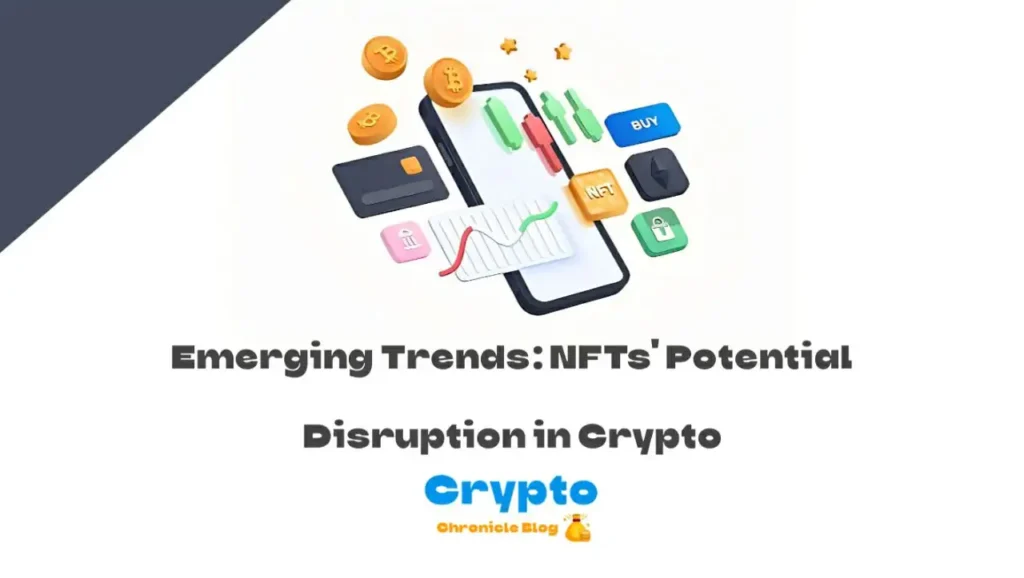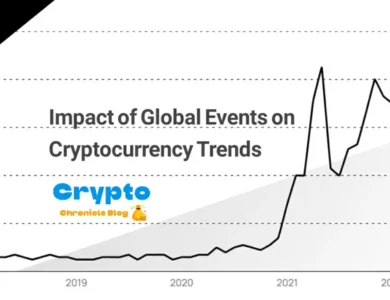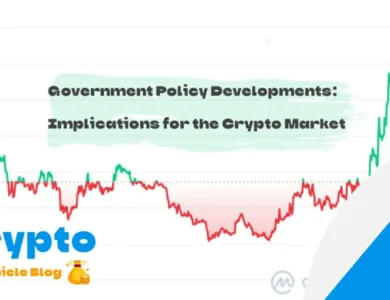Emerging Trends: NFTs and Their Potential Disruption in the Crypto Landscape
In the ever-evolving landscape of cryptocurrencies, Non-Fungible Tokens (NFTs) have emerged as a captivating force, captivating the imaginations of investors, creators, and technologists worldwide. These unique digital assets represent a seismic shift in how we perceive ownership and authenticity in the digital age, poised to disrupt traditional notions of value exchange and digital rights.
The meteoric rise of NFTs can be attributed to their inherent uniqueness and scarcity. Unlike fungible cryptocurrencies such as Bitcoin or Ethereum, each NFT is one-of-a-kind, imbued with individual characteristics that cannot be replicated. This scarcity has led to a surge in interest from collectors and enthusiasts, driving up prices and fueling a vibrant market for digital art, collectibles, and other unique assets.
Beyond their role as digital collectibles, NFTs have the potential to revolutionize a wide range of industries, from art and entertainment to gaming and real estate. By providing a means for creators to tokenize and monetize their work directly, NFTs empower artists, musicians, and other content creators to reach a global audience and retain greater control over their creations. Additionally, NFTs offer new opportunities for investors to diversify their portfolios and participate in emerging digital markets.
Understanding NFTs:
NFTs are cryptographic tokens that are unique and indivisible, unlike cryptocurrencies such as Bitcoin or Ethereum, which are fungible and interchangeable. Each NFT is distinct and cannot be replicated, making them ideal for representing digital art, collectibles, virtual real estate, and more. The uniqueness and scarcity of NFTs are what imbue them with value, as collectors and enthusiasts vie for ownership of rare and coveted items.
The Rise of NFTs:
The meteoric rise of NFTs can be attributed to several factors. First and foremost is the growing interest in digital ownership and decentralized finance (DeFi). NFTs provide a means for creators to monetize their digital creations directly, without the need for intermediaries such as galleries or publishers. This democratization of content creation and distribution has empowered artists, musicians, and other creators to reach a global audience and retain more control over their work.
Applications and Use Cases:
The potential applications of NFTs are vast and varied. From digital art and collectibles to virtual real estate and in-game assets, NFTs are already transforming industries and creating new opportunities for innovation. In the art world, NFTs have enabled artists to tokenize their work and sell it directly to collectors, bypassing traditional gatekeepers and unlocking new revenue streams. Similarly, in the gaming industry, NFTs are being used to tokenize in-game assets and create verifiable scarcity, leading to vibrant secondary markets where players can buy, sell, and trade virtual items.
Challenges and Opportunities:
Despite their promise, NFTs also face challenges and criticisms. Chief among these are concerns about environmental impact, given the energy-intensive nature of blockchain technology. Additionally, questions have been raised about the long-term viability of certain NFT projects and the potential for fraud and copyright infringement. However, proponents argue that these challenges are outweighed by the opportunities presented by NFTs, including greater transparency, increased liquidity, and expanded access to global markets.
The Future of NFTs:
As NFTs continue to gain mainstream attention and adoption, the future looks bright for this burgeoning asset class. Innovations such as fractionalized ownership, interoperability between different NFT platforms, and integration with other emerging technologies like augmented reality (AR) and virtual reality (VR) promise to further expand the possibilities of NFTs and revolutionize the way we buy, sell, and interact with digital content.
Conclusion:
In conclusion, NFTs represent a paradigm shift in the world of cryptocurrencies and digital ownership. With their unique properties and wide-ranging applications, NFTs are poised to disrupt traditional industries and unlock new opportunities for creators, investors, and consumers alike. As we continue to explore the potential of this transformative technology, one thing is clear: the era of NFTs is only just beginning.
Here are some reputable sources that discuss emerging trends in NFTs and their potential disruption in the cryptocurrency landscape:
- “NFTs: Blockchain-Powered Digital Art” by Christie’s: This article explores the rise of NFTs in the art world and their impact on traditional notions of art ownership and value.
- “Non-Fungible Tokens (NFTs): What Are They and Why Do They Matter?” by CoinDesk: CoinDesk provides an in-depth analysis of NFTs, including their origins, applications, and potential implications for the future of finance and digital ownership.
- “The NFT Phenomenon: What Are NFTs and Why Are They So Popular?” by Harvard Business Review: This Harvard Business Review article delves into the growing popularity of NFTs and their disruptive potential across various industries, from art and entertainment to gaming and finance.
- “The State of NFTs: A Comprehensive Overview” by CoinTelegraph: CoinTelegraph provides a comprehensive overview of the current state of the NFT market, including trends, challenges, and future outlook.
These sources offer valuable insights into the emerging trends surrounding NFTs and their potential to disrupt the cryptocurrency landscape.



